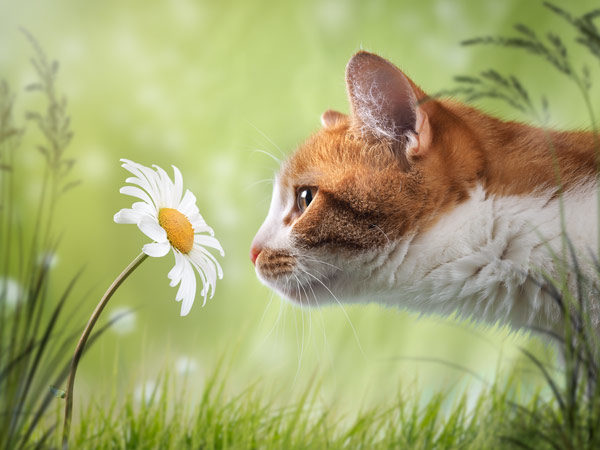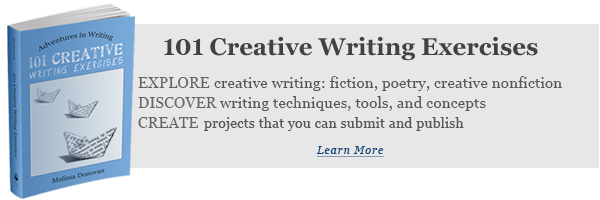Ah, the senses: sight, sound, smell, taste, and touch. How do they relate to poetry writing?
We delight in the pleasures of the senses, but infusing poetry with sensory stimulation is not an easy task. It takes a deft and creative writer to forge images — using text — that engage a reader’s senses.
So why bother?
When you engage your readers’ senses, your poetry becomes more compelling and more memorable.
Some scientists say smell is the strongest of the senses in terms of memorability. If you get your readers to physically experience scent (or any other sensation), you’ll have them hooked. Surely you’ve read a passage that described the delicious scent of home-cooked food and found your mouth watering?
Today’s poetry writing exercises are designed to help you write with more sense. Below, you’ll find a series of short poetry writing exercises that culminate with making a poem that is peppered with sensory stimuli.
Step 1: Prepare
- Start with a sheet of paper divided into five columns. If you prefer to do writing exercises on your computer, you can use a spreadsheet or word-processing program.
- Label the columns: sight, sound, smell, taste, and touch.
- Spend a few minutes populating the columns with words and phrases that reflect the correlating senses. For example, in the smell column, you might write chocolate chip cookies baking in the oven, a blooming rose, or the cat’s litter box. Be as descriptive as possible and avoid using only stimuli that please or entice; add a few that are unpleasant for balance.
Step 2: Review
- Review your list carefully, testing each item on your list to see how it affects you. When you read something like throbbing bass coming from the car in the next lane, can you feel the boom?
- As you go through your list, cross out anything that doesn’t engage your senses.
- Highlight those items that really affect you — when you can feel the soft slick of silk or hear the sound of a quiet breeze rustling dried leaves, you’re affected.
Step 3: Poetry Writing Exercises
- Write one sentence for each of the five senses. Make sure it’s a complete sentence, and try to generate a sentence that evokes a scene. In other words, “The roses smell nice” won’t cut it. Try for something like, “I bent down, beckoned by the rose’s sweet perfume and dazzling red hue.” Note that this sentence affects two senses: smell (sweet perfume) and sight (red hue).
- Next, try to do what I did in the sample sentence above. Combine two or more senses into a single, complete sentence. When you read it back, does your nose tingle? Do you see bright colors in your mind?
- Look for sentences that you can link together, words and phrases that can be joined under a common theme. For example, if a lot of your words, phrases, and sentences could be set outdoors, then they can be grouped together.
- Finally, using the material you’ve generated, write a poem that stimulates each of the five senses.
Tips
- You can also work backwards. Start with a theme, and then populate your lists with things that will engage the senses and that correlate with the theme you’ve chosen.
- Need some ideas? Start by choosing a setting, such as an event, where it’s likely all fives senses would be stimulated. For example, at a wedding, there will be the scent of fresh flowers, the taste of a wedding cake, and the sound of “Here Comes the Bride.” Other likely events include concerts, parties, meetings, vacations, and — try this one — cleaning day.
- If you get stuck, refer to your brainstorming lists or practice sentences and use that material for inspiration.
- Try not to make it too obvious that your goal for the poem was to stimulate the reader’s senses. Be sure it flows naturally.
You should have fun with poetry writing exercises, but they should also challenge you. If you have any favorite poetry writing exercises of your own, feel free to share them in the comments. And keep writing!
Looking for more poetry writing exercises? 101 Creative Writing Exercises features two full chapters on poetry writing:






I’m not going to put all of the things that I came up with, just a couple of the best ones. Here’s what I came up with: The candle’s wax dripped down its side as it filled the air with its essence and the flame from the wick flickered, barely lighting the dim room. His hand scrubbed across the burrs buried in the dog’s fur as he tried to look for a collar in the mass of tangled hair. She held the baby in her arms, feeling the smooth skin against her dry skin, looking in wonder at the pink skin, the wide blue eyes and the pale fuzz covering the child’s head.
This was a very fun exercise. I enjoyed this one a lot, I didn’t have a hard time coming up with things. Thank you.
The burrs in the dog’s fur! That’s great, Donna. I really did get a scratchy sensation reading that. Nice work!